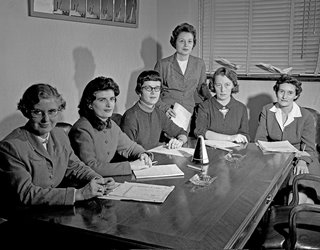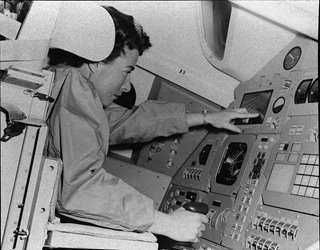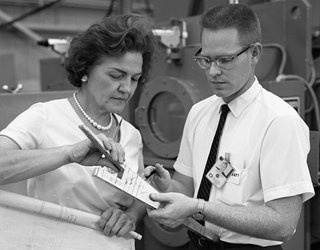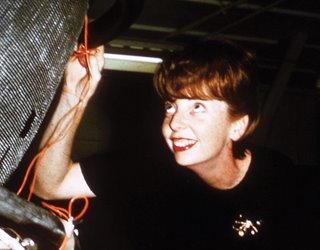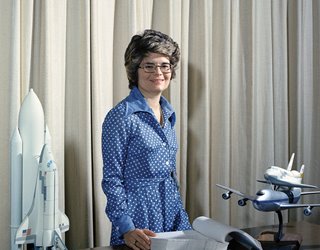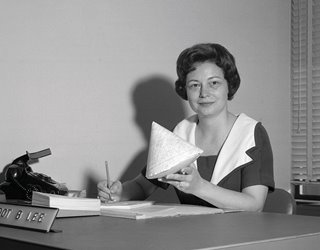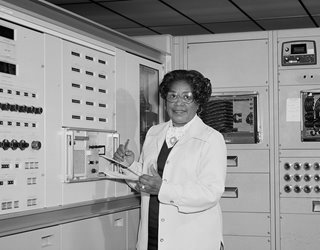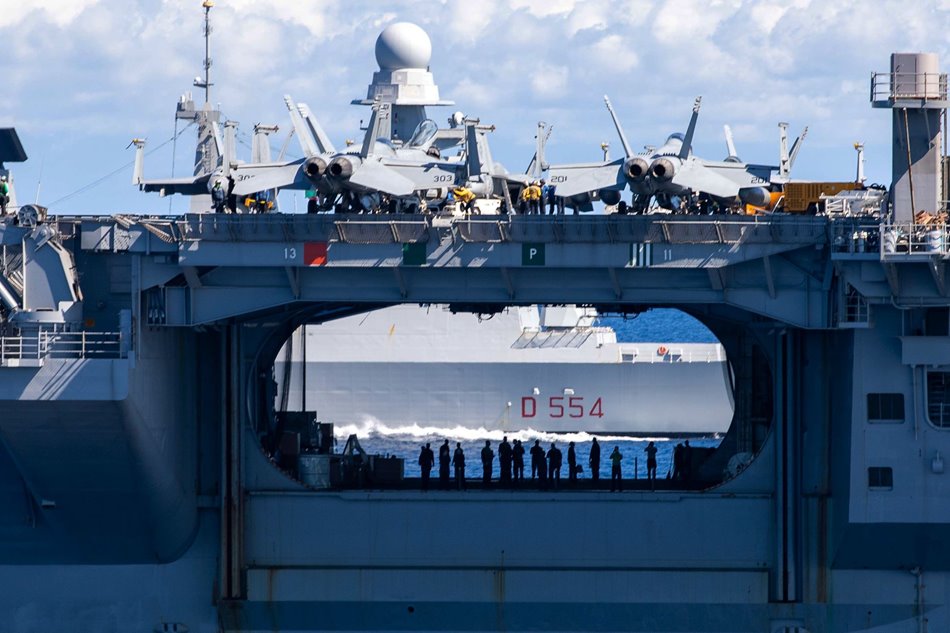In the Shadow of Apollo 11:
11 Women Engineers
In the Shadow of Apollo 11:
11 Women Engineers
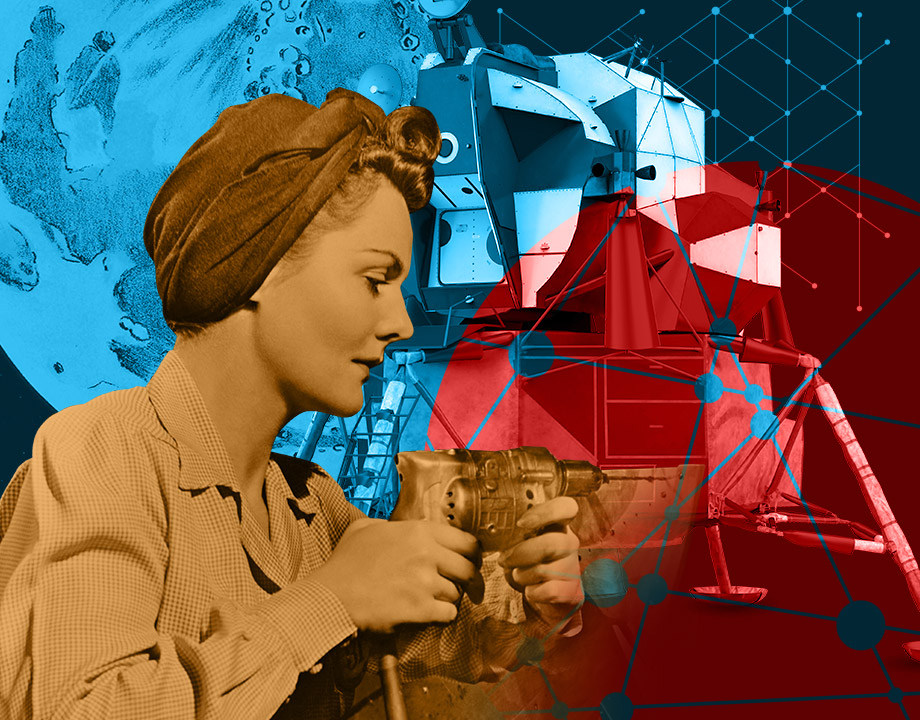

Photographs of the Apollo 11 launch portray the United States space program of the 1960s as a white man’s world. NASA statistics confirm this: In 1959, the new space agency employed six women who were classified as scientists. By the Apollo era, women made up only 3 to 5 percent of the professional work force agency-wide. (The percentage of African American professionals was even smaller, between 1.5 and 3 percent.) In the popular imagination, these women were virtually invisible.
Over the past decade, however, some of those pioneering women and their invaluable contributions have finally been recognized. Margaret Hamilton, who developed the on-board flight software for Apollo’s on-board computer, is now widely hailed as the first software engineer. Katherine Johnson, Mary Jackson, Dorothy Vaughan, and other black female mathematicians who calculated flight trajectories as so-called human computers have been featured in a book and movie.
Hundreds other women who were not considered engineers provided critical support. These include workers known as “little old ladies” who threaded copper wires through magnetic rings, creating core rope memory for Apollo computers; seamstresses for an undergarment company who created the safe and flexible spacesuits; and NASA secretaries, assistants, and typists.
Here is a gallery of some of the unsung women engineers—and a brief synopsis of their contribution to the Moon landing.
1. Barbara ‘Bobbie’ Crawford Johnson
In high school Bobbie Johnson started flying airplanes. By 1946, she became the first woman to graduate with an engineering diploma from the University of Illinois and began working at North American Aviation. At NASA, Johnson worked around the clock on the Apollo’s trajectories and aero-heating environments. On Johnson’s recommendation, NASA began using elliptical, rather than circular, orbits during space flights to ensure astronauts could return in case of a propulsion failure. “I think the lunar landing was the coup de grace for me—it’s just the fact that we could go to a strange body and come back alive,” Johnson said in a Society of Women Engineers (SWE) oral history interview in 2003. “It didn’t matter what we brought back—rocks were fine. You wouldn’t dream you could do that, and we did it.”
2. Margaret W. ‘Hap’ Brennecke
Daughter of a music teacher, Margaret, or Hap, Brennecke was inspired by President John F. Kennedy’s 1961 speech. She had been working at Alcoa on how to weld large structures for boats, aircraft, and bridges, so she applied for a job at NASA’s Marshall Space Flight Center. She was hired—as the first female welding engineer to work at Marshall’s Materials and Processes Laboratory. Brennecke’s work at Marshall focused on developing stronger and lighter aluminum alloys to withstand hostile space environment. She also invented new welding processes to join giant pieces of Saturn V fuel tanks. Brennecke faced discrimination throughout her career and used only initials instead of her full name in numerous academic papers in professional journals, for fear of not being accepted for publication. “You learn to go around or up or down of the roadblocks,” she said in a 2004 NASA interview.
3. Arminta Harness
Life-long fan of Amelia Earhart and a pilot herself, Arminta Harness graduated from the University of Southern California with a Bachelor of Engineering degree in Aeronautical Engineering in 1955, and became the first woman engineer to join the United States Air Force. A few years later, Lt. Col. Harness was assigned to Gemini Program and witnessed launches of several Gemini and Apollo missions at Cape Canaveral in Florida. Her desk at Los Angeles Air Force Base was next to Buzz Aldrin’s, who was also an Air Force officer. “I remember an Apollo landing where we almost lost the crew before we got them out, and Buzz Aldrin had been my desk mate earlier,” Harness said in a 2003 SWE interview. “It was a very personal thing. There were high points and there were low points. They were exciting. It was wonderful to be a part of it.”
4. Phyllis Gaylard
Phyllis Gaylard graduated from UCLA in 1959 with a B.S. in engineering. She first worked as a structural engineer, and then at TRW designed space vehicles and rocket engine structures and researched ways of predicting fatigue failures in solar arrays. Gaylard contributed to the development of the lunar module descent engine for the Apollo program. “The moon lander had to withstand landing on a flat-topped, twenty-four inch high rock without tipping over. So we had to have the nozzle extension that comes down off the bottom of the spacecraft collapse if it happened to hit something like that,” Gaylard told a SWE interviewer in 2007. “Which is not—you know, you normally don’t design things to fail. To withstand all the loads you need to up to a certain point and then crumble. Well, no loose parts, just squish. And we succeeded in that.”
5. Ivy Hooks
With a master’s in mathematics and physics, Ivy Hooks began working at NASA in 1965 as an aerospace technologist. Her first job was to model the lighting on the Moon to build accurate simulators for training astronauts. She worked on Apollo’s launch escape system and the parachutes to make sure they behaved as expected in case of an aborted launch. Hooks also contributed to the deflector that protected the underside of the Lunar Module during landing. “When the first spacecraft landed on the Moon, I tried to figure out, what do I feel right now?” Hooks said in a 2003 interview with the SWE. “I’ve worked on some of these pieces and parts of this, I helped put somebody there.”
Editor’s Pick: Engineers Remember the Making of the Lunar Module
6. Dorothy ‘Dot’ Lee
The design of all U.S. manned space programs draw on the work of Dot Lee. She read astrophysics books as a child and dedicated herself to helping humanity get to the Moon. Fresh from college with a degree in mathematics, Lee was hired as a human computer to work at NASA Langley Research Center. By chance, the legendary designer Maxime Faget, then head of the Pilotless Aircraft Research Division, noticed Lee and moved her to engineering. Later, Lee transferred to Johnson Space Center, where she was one of only a handful of women engineers. Lee worked on predicting the performance of the Command Module heat shield, looking at temperatures and pressures the capsule would have to endure on re-entry. Her calculations were essential in the design of that spacecraft—and many others. On the day of the Moon landing, she didn’t get to celebrate with the other engineers. “I was just going to go home,” Lee said in 1999 NASA interview. “I had to relieve the babysitter.”
7. Georgianna Yvonne Young ‘Y.Y.’ Clark
In 1951, Y.Y. Clark was the first woman to graduate with a degree in mechanical engineering from Howard University, but as the only woman graduate, she had to receive her diploma in a private ceremony. Working as an aerospace engineer at NASA’s Marshall Space Center, Clark investigated Saturn V hot spots, found their cause, and corrected the underlying problem of heat escaping from ignition. Later, she helped design the Apollo Lunar Sample Return Container, the box in which Neil Armstrong brought samples back to Earth. Fighting through both gender and racial discrimination, this ASME Life Member dedicated over 50 years to mentoring and teaching students at Tennessee State University. “Now, you might call me a pioneer, but I don’t see myself as one,” Clark said in a 2001 SWE interview. “I am tired of being the first person doing something. Where’s the rest of these people?”
8. Mary Winston Jackson
Mary Jackson, whose contribution to space exploration as a human computer was chronicled in the 2016 film Hidden Figures, became NASA’s first black female engineer in 1958. To earn her engineering degree, Jackson needed to take graduate-level night classes at the University of Virginia, but those classes were taught at a segregated school in Hampton, Va. She had to petition the city for permission to attend those classes. Jackson’s work as an aerospace engineer specialized in boundary layer effects on vehicles at supersonic speeds. Analyzing aerodynamic data from wind tunnel experiments and real flight data, Jackson focused on understanding air flow, including thrust and drag forces.
9. Naomi McAfee
After Naomi McAfee graduated from Western Kentucky University with a physics degree in 1956, she started at Westinghouse, eventually working her way up to become the company’s first female supervisor engineer. McAfee worked on environmental measurements experiments, including the measurement of micrometeorite bombardment on objects in space; that research informed the design of the Apollo spacecraft’s hull. McAfee also worked on the television camera used on Apollo 11. “It’s hard to describe the anticipation and the anxiety that one felt hearing them land on the Moon, and then knowing that they were going to be coming out, and that when they did step onto the Moon, that that camera would take the pictures and transmit them back to the Earth,” McAfee said in a 2003 SWE interview. “And just waiting to see if it would work created quite a bit of stress.”
Recommended for You: 5 Women Pioneers in Engineering
10. Doris C. Chandler
Armed with a degree in mathematics from Tulane University, Doris Chandler began working in guidance theory applications research and development in 1954. Chandler was one of the first women to assume a leadership role at NASA when she became an active deputy chief of the Astrodynamics and Guidance Theory Division in 1969. She was the key aerospace engineer behind Saturn V flight mechanics and guidance system. A few years later, when participating in a first all-women materials science experiments for Spacelab, Chandler told a newspaper that she hoped to fly in a space mission herself, together with her daughter who was planning to study engineering. “There are plenty of qualified women available for scientific type missions,” she said in 1974. “There is no reason why women couldn't do almost any job a man could do in space in the future, including pilot, technician, or even construction worker.”
11. Jeanne Lee Crews
With a degree in aeronautical engineering, Jeanne Crews joined the flight crew support division at Johnson Space Center in 1964. Crews helped designed and tested flight simulators for astronauts, and studied Earth landmarks visible from orbit that astronauts could use for navigation if primary systems failed. She longed to be an astronaut, however, and her supervisors allowed her to operate the flight simulator as long as no one saw or photographed her. Crews also wasn’t allowed to witness the historic Apollo 11 Moon landing with her male colleagues. “Women were not allowed out on the floor in Mission Control,” she said in a 2007 NASA interview. “I was in the back rooms, and then if I’d walk in the elevator, there would be comments, like, “Well, it’s certainly good we keep women out of the Mission Control.”
Daria Merkusheva is a technology writer based in New York City.
You May Also Like: Sunita Williams Soars Weightlessly
